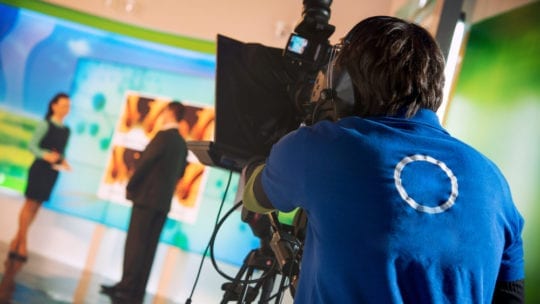
You know that offering up someone from your C-suite to the press for broadcast interviews is a great way to earn coverage, but how can you be sure that the exec is ready? What questions should they ask ahead of time? How should they prepare, practice and present themselves? What should they wear?
These questions were addressed by Anna Keeve, public relations manager for IT security company ESET, at the PR News Video Boot Camp, which took place on Dec. 5 at Washington, D.C.'s historic National Press Club. Keeve noted that broadcast no longer only refers to television and radio, but also incorporates Facebook, Instagram, Twitter, YouTube, podcasts and on-demand video platforms.
She then proceeded to break down, step-by-step, how PR pros can best prep their spokespeople for broadcast interviews, wherever their role exists within the organization. Here are some of her tips:
Know Before You Pitch
Many communicators don't think to ask whether or not an interview will be in-studio or in-field, but the difference can be crucial for your spokesperson. From deciding what outfit to wear to knowing the weather conditions on the day of the interview, outside interviews come with a separate set of considerations and precautions that no spokesperson will want to find out day-of.
Another thing to know beforehand: Has the reporter covering this story reported on a similar matter recently? If so, there's a baked-in opportunity to learn their perspective and take on your industry, brand or executives. By contrast, if the reporter is covering this subject for the first time, the line of questioning will likely reflect that.
If the interview is on-camera, it's also worth inquiring as to what visuals your organization can provide to the segment. B-roll always looks good when intercut with your spokesperson's interview, as do on-site clips that give viewers a behind-the-scenes peek inside the daily operations at your organization.
Ask for Questions in Advance
There's nothing wrong with asking the outlet to provide questions for your spokesperson in advance. Though some outlets will likely refuse on the grounds of journalistic protocol, it doesn't hurt to ask. If you get a 'no', offer to provide questions that you know your spokesperson will be comfortable answering.
If the interview is on-camera, ask about a lower-third that will be displayed on screen, and proactively define how you want it to read. Make sure the name of your spokesperson, their title, and the company are spelled and stylized properly. Also ask if your organization can insert a call-t0-action (website, helpline etc.).
Other questions worth asking include: When will the segment air? Who are the other guests? What is the green room/makeup situation? What will the studio setup actually look like?
Develop Messaging Beforehand
Make sure that the spokesperson knows the purpose of their appearance beforehand. Depending on where they exist within the organization, they might not completely be aligned with the brand's external strategy and goals. It's the communications team's responsibility to make sure that happens.
Communicate frequently with the outlet to be sure that the host/interviewer and your spokesperson are on the same page. They should have equal expectations as to what will be discussed beforehand, instead of finding out once the microphones are live.
Write out talking points beforehand in a way that best suits the spokesperson. Bullet points work for most, but some people may prefer memorizing full sentences. It depends on the person speaking.
Style-wise, analogies are always a smart move for your spokesperson when trying to convey a complex subject or relate to your audience's interests. That said, jargon is a big no-no—avoid corporate speak and acronyms. One way to keep your spokesperson from lapsing into jargon is pulling out their talking points in the context of how a broadcast functions and labeling them as "quote," "soundbite" or "headline".
Practice Makes Perfect
Make sure your spokesperson practices out loud—things may look better when written down, and the spokesperson might have trouble with certain words. If time permits, record a dry run, watch it back with the spokesperson and repeat until they feel comfortable.
Plan Your Wardrobe
Keeve says that blue and red solids are the way to go on-camera—avoid patterns, black and white shirts and anything distracting (like low-cut tops). A light blue shirt and a dark blue jacket works best for men, who should wear their jacket unbuttoned when seated and buttoned when standing.
Sunglasses are another gaffe—even when the interview is outside in daylight—as they make your spokesperson look too casual. Same with noisy or bulky pieces of jewelry, which can be distracting and have the potential to rub the microphone. Bring some facial powder to reduce shine.
Master Your Message Delivery
Your spokesperson should not speak too fast or too slow. When speakers get nervous they tend to ramble, but knowing when to stop after making your point is crucial. Don't be afraid of lingering silence. Your host will always pick up the ball and keep the conversation rolling—that's their job.
Have your spokesperson slow down when highlighting key messages or data you want the audience to remember, and do some warm-up exercises if time allows. Keeve's favorite vocal warm-ups are: "Thoughtful thinkers think things through," "sheep shears should be sharp" and "Go slow Joe, you're stepping on my toe."
Connect with Anna on LinkedIn.
Follow Justin: @joffaloff
